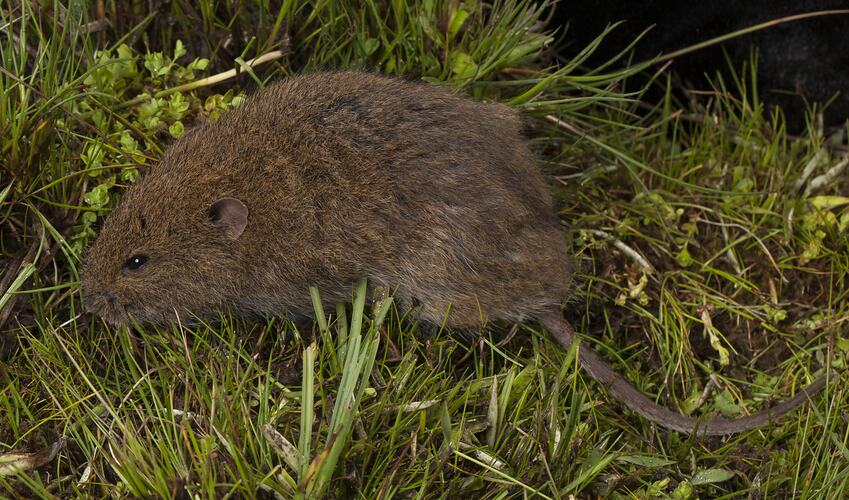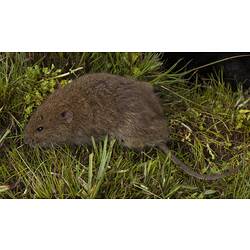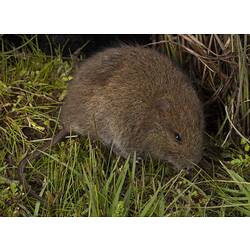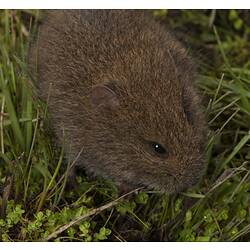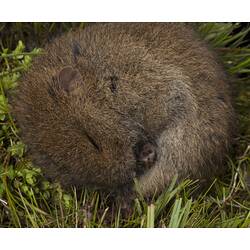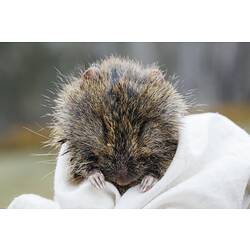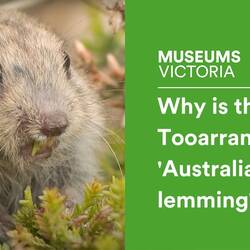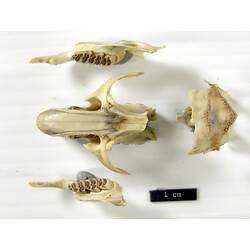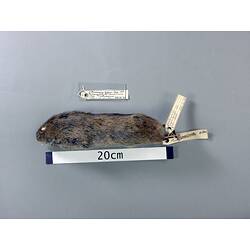General Description
Upper body fur is long, fluffy and dark brown. Underparts are lighter. Feet are dark. Tail is short and dark. Head is wide and teeth are broad compared to other rodents of its size. Tuft of hair inside ear distinguishes them from other rats. Body up to 18 cm, tail up to 13 cm.
Biology
Feeds primarily on grasses and sedges. They have enlarged intestines, wide molars and broad incisors that help them process the large quantities of food they must consume to obtain sufficient nutrients. In this sense they are convergent with voles and lemmings of the northern hemisphere.
Distribution
Patchy distribution in in cool, wet areas of Victoria, New South Wales, Australian Capital Territory and Tasmania from sea level to the highest peaks but with greatest occurrence at higher elevations.
Habitat
Occurs in alpine and subalpine heathlands, grassland adjacent to boulder outcrops, swamps, sedgelands, coastal grassy or shrubby dunes, and sometimes forests with grassy understories.
More Information
-
Animal Type
-
Animal SubType
-
Brief Id
Fluffy dark brown fur paler underneath, short tail darker on top than underneath, dark feet, wide blunt head, stocky body, broad teeth, tuft of hair inside ear.
-
Maximum Size
30 cm
-
Habitats
-
Diet
Herbivore
-
Endemicity
-
Conservation Statuses
CITES: Not listed, FFG Threatened List: Vulnerable, EPBC Act 1999: Not listed, IUCN Red List: Near Threatened
-
Taxon Name
-
Scientific Author
Thomas, 1882
-
Common Name
Broad-toothed Rat
-
Other Names
Broad-toothed Mouse , Broad-toothed Mastacomys
-
Kingdom
-
Phylum
-
Subphylum
-
Class
-
Order
-
Suborder
-
Superfamily
-
Family
-
Subfamily
-
Genus
-
Species Name
fuscus
